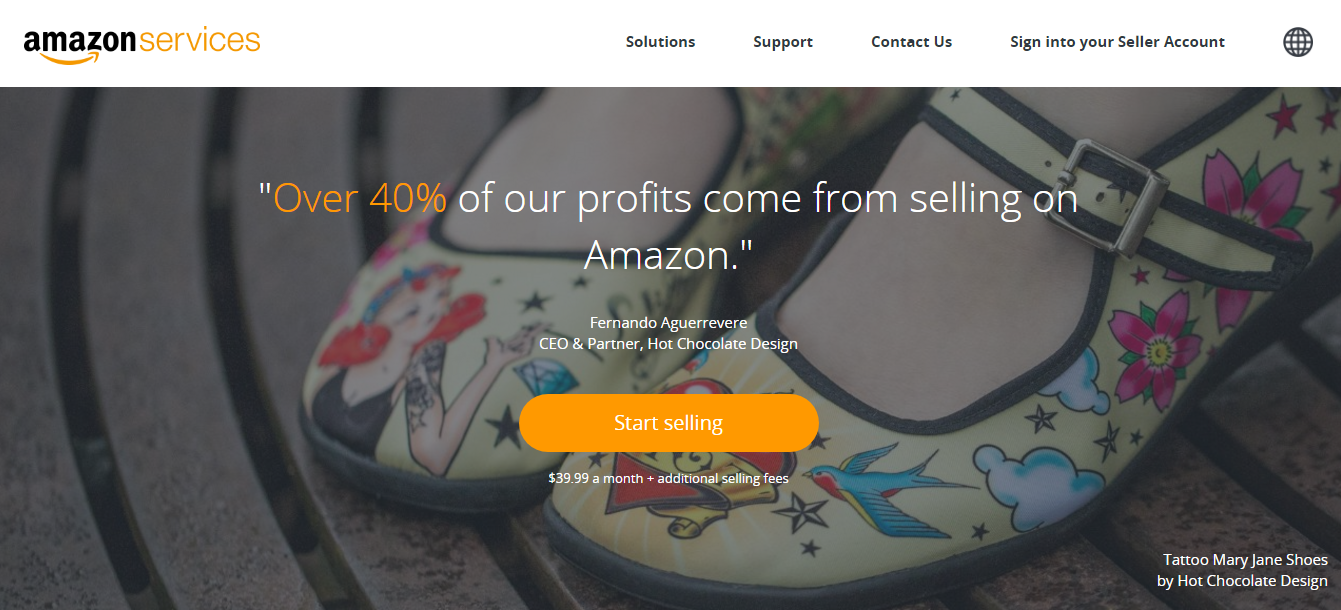
When to make the jump to Amazon: A price estimate to sell in the marketplace
With the rise of market places many companies are wondering when to make the jump to Amazon and how much it will cost them. In the difficult task of giving a recommendation that works for everyone, there are a few common variables for those who want to sell on Amazon.
Before considering the switch, it’s important to make sure it’s worth it. The first thing you should keep in mind is that it has its pros and cons as a sales channel.
How does Amazon work?
Undoubtedly you’re facing one of the most user-concentrated platforms and furthermore, one with loyal users who hold the brand in high regard. This itself seems reason enough to tip the balance but …
Let’s be real, a large number of Amazon’s customers don’t understand how it works. For them, it’s just another store and they don’t get how a Market Place with third party products operates.
This means that even in the best case scenario, where everything works perfectly, it is very difficult to keep that customer coming back outside of Amazon.
On the other hand, you have to keep in mind that the costs Amazon charges for each transaction aren’t low, but we’ll look at that more in depth a little later.
When to make the jump to Amazon
Like I said, Amazon isn’t for everyone, but for some people it’s appealing:
- If you work in a niche: Here you’ll find more limited competition than with companies that sell commodities or face saturated markets.
- If you have a product in high rotation or something that requires maintenance or consumables. In this case, you can enter the market and take advantage of similar business.
- If you produce your own items: In this case, by having complete control over what you sell you’ll have more flexibility with commercial margins and you’ll be in a stronger position for the buy box over your competitors.
I’ll stop for a minute to explain a simple concept. To put it plainly, the buy box is a square button with the call to action to buy.
The default seller, the one who has the majority of the sales, is supposed to be in this box. It’s not as recommended to launch on Amazon if you don’t have the flexibility to play with the margins or production capacity required. You could die from success by not being able to take on the demand.
How much does it cost to sell on Amazon?
This is the second part and it’s pretty important that you figure the numbers, no matter how much you fit the business model.
Within the Amazon seller program there are two sales plans: the so-called “individual seller” and the “pro seller” that’s geared toward the sales with the highest monthly volume.
Each transaction on Amazon is charged up to three times by the Market Place:
- Closing sales fee: For an individual seller, it costs 0.99$. The Pro seller pays a monthly fee of 39.99$ so the individual fee would not apply here, but it would be prorated over all sales closed.
- Reference fee: a scale is defined for each product category that we could say on average is usually 15% of the total product (including shipping and handling). This fee varies a lot because it ranges from 45% for people selling accessories for Amazon devices to 7% for electronics and IT products.
- Selling fee: These are management fees and, the same with reference fees, they vary depending on the category of the item.
I’ll give an easy example. If you sell a book for 10$ and you apply the 2.99€ shipping fee before VAT, the fee for Amazon would be 2.95$ for Pro sellers. For individual sellers that pay 0.99$, it would be 3.94$ per additional transaction.
Obviously, you’ll have to add the costs derived from the logistics to this. Here you need to figure the numbers based on what’s dictated by the negotiation with your provider.
Amazon also offers the possibility of using their logistics platform (they have everything). If you’re interested, you can calculate how much it would cost to have them centralize shipments with this calculator ranging from a minimum of 1.76$ for smaller shipments (80g) to 10.91$ for larger shipments (29.76 Kg).
You also have to add a monthly storage fee to this that you can estimate at around 20-28$ depending on how many cubic meters you take up each month.
As you can see, selling on Amazon isn’t cheap but you may be interested if you’re looking for volume. It’s also the only way to advertise on this website.
The decision is always up to you and I hope this post has made it a little clearer.











